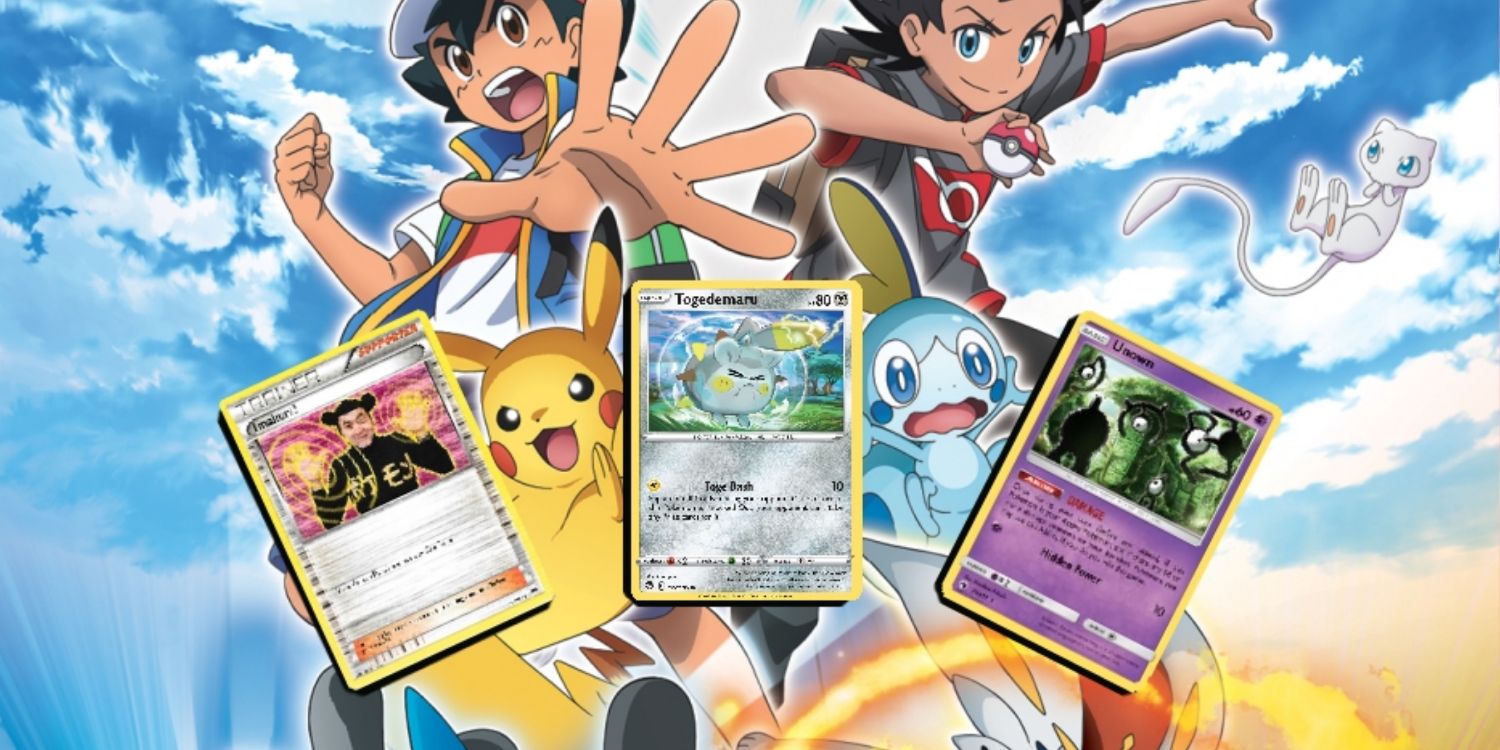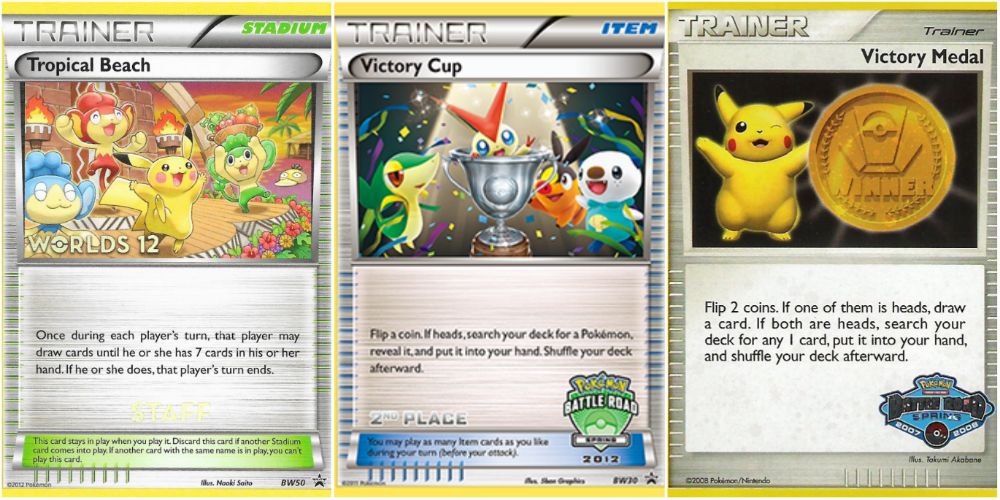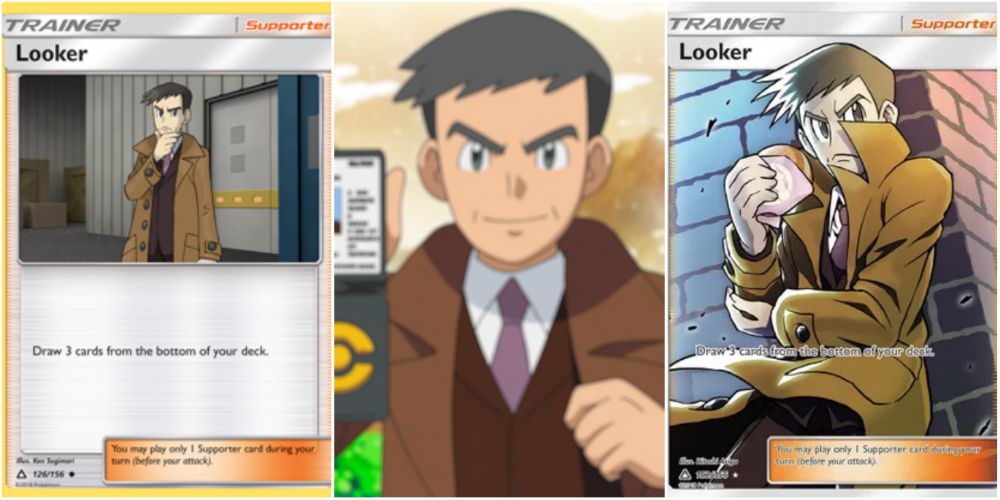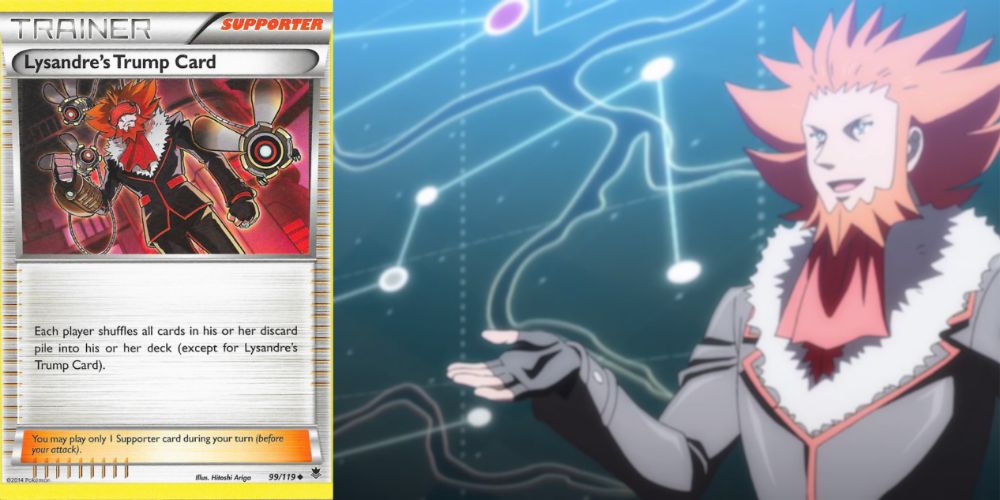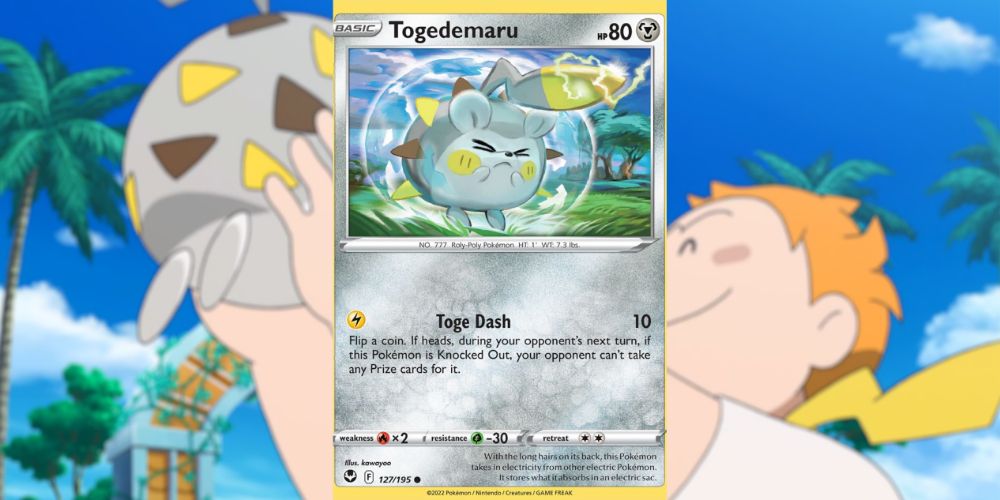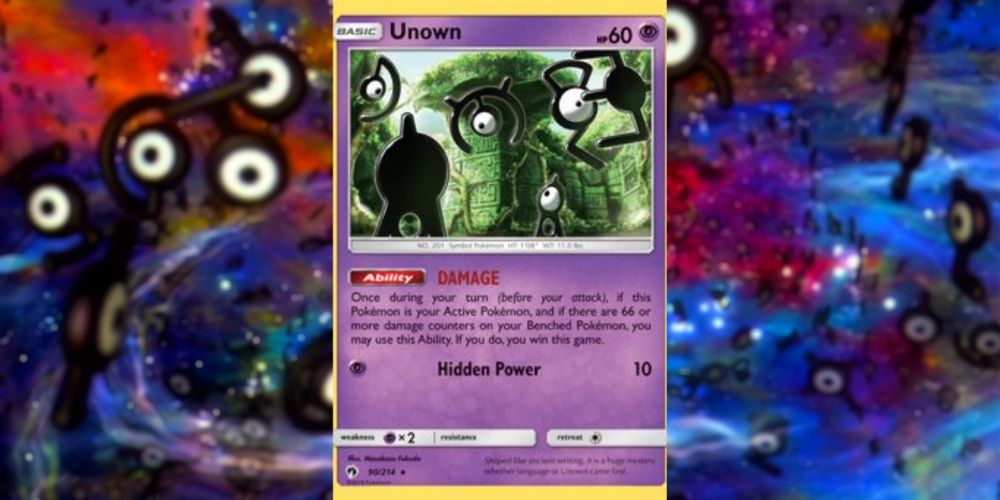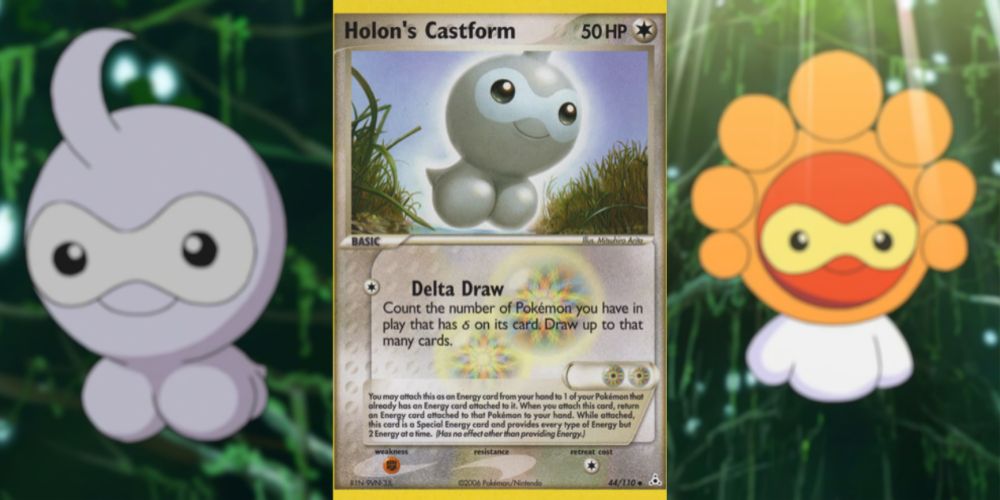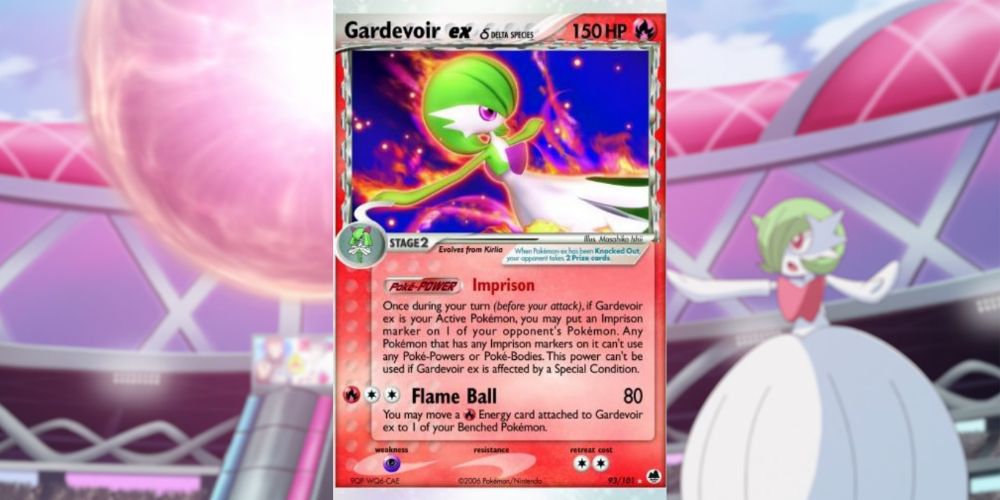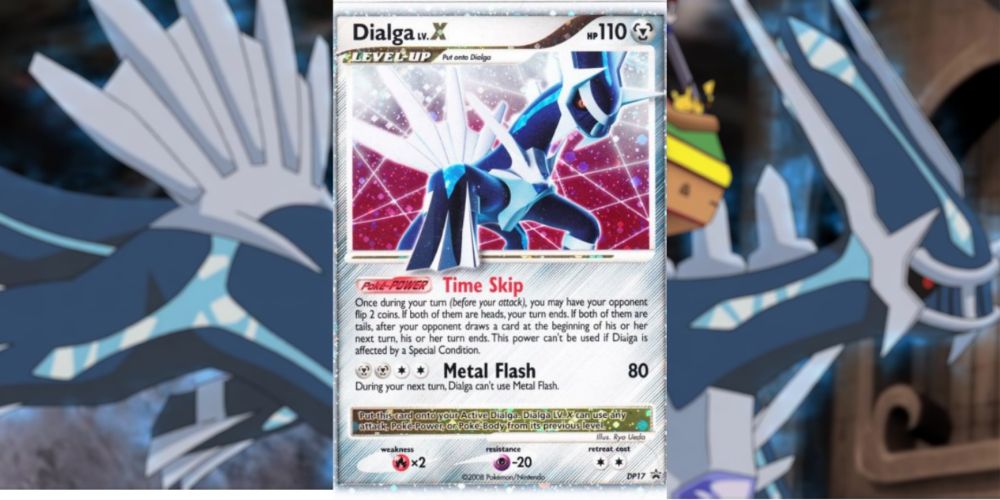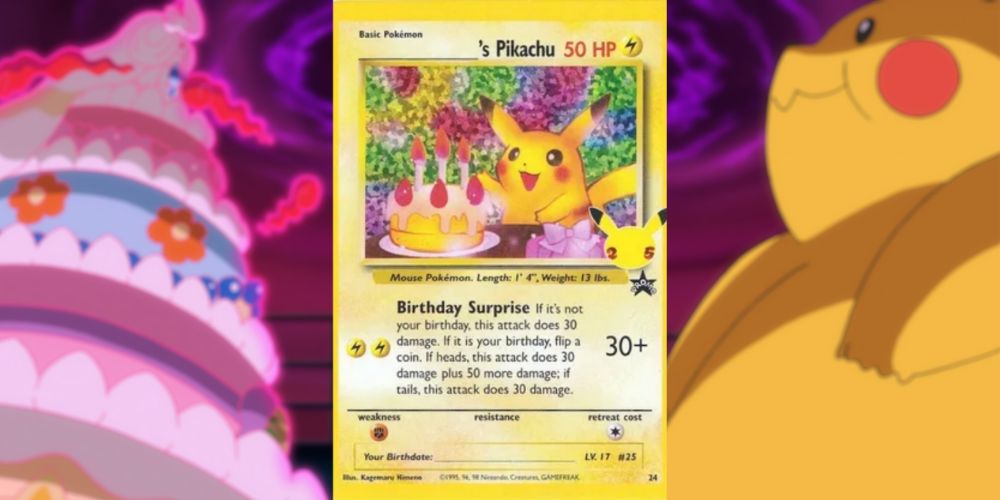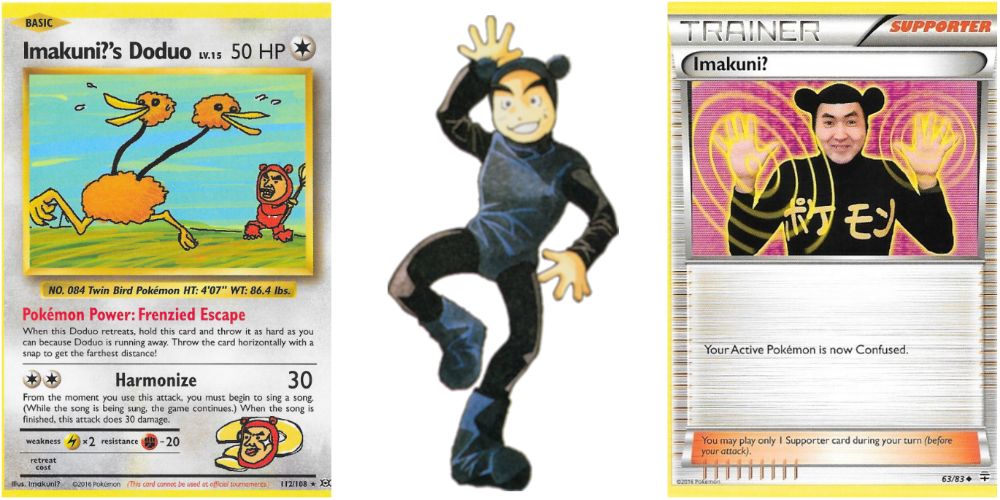With over twenty years of development and no signs of slowing any time soon, the Pokémon Trading Card Game has had plenty of time to experiment. Whether in the early years with cards like the Fire-type Horsea δ or the modern day with format-defining Pokémon like Radiant Greninja or Charizard, creative design abounds in the game.
While every set seeks to bring something new—as that's the point of adding them—some have offered more unique options than others. These Pokémon cards aren't always especially powerful, some are even intentionally weak or parodies, but they do stand out by offering something no others do, from alternate win conditions to reversals of normal game rules, and everything in between.
10 Trophy Cards Can Be Too Powerful For Their Rarity
Like most TCGs, Pokémon has a competitive side, and with competition comes trophies. Tropical Beach is just one of many trophy cards, but it stands out as the first to receive a full-on ban, as drawing seven cards every turn was deemed too powerful, especially given the card's extreme rarity.
Victory Medal and Victory Cup are other somewhat more benign examples, the former either drawing a card or searching the deck, and the latter functioning exactly as a generic Pokéball. While there is always a chance more might join Beach on the ban list in the future, the company seems to be keeping more of an eye on promo cards nowadays.
9 Looker Reverses The Normal Order Of Card Draws
Card draw is generally more powerful in Pokémon than in other TCGs, and while "draw 3 cards" effects aren't bad per se, most decks will seek out better options. Most of these cards are based on the rival trainers from the various generations of games, but Looker stands out as different.
Based on an Interpol agent introduced in Platinum, Looker has had numerous appearances in games and the anime in the years since. Likewise, his card effect is just a little bit different from his competition, drawing from the bottom of the deck, rather than the top, and potentially having some unusual synergies the others might lack.
8 Lysandre's Trump Card Resets The Deck
For a brief period, Lysandre's Trump Card was one of the most played cards in tournaments, but a swift ban brought an end to its dominance. While the ability to recycle a discard pile into the deck doesn't advance the game state by itself, it does allow the reuse of cards that do.
In the Pokémon TCG, the risk of losing due to simply running out of cards is much higher than in most other games, and the ability to bring cards back from the discard pile is much rarer. As such, an effect like this proved to be deceptively meta-defining, though similar cards have shown up in recent years.
7 Togedemaru Can Deny Prize Cards
Introduced in the Silver Tempest expansion was the "Pikapals" archetype, featuring a quartet of electric rodents that, while weak on their own, get access to devastating attacks when they tag out. That is, except for Togedemaru, who is limited to the 10-damage "Toge Dash" attack.
What it lacks in damage though, it makes up for by being able to deny the opponent a prize card. While massive Pokémon V gives two prize cards when knocked out, a deck using Togedemaru will only be giving a single prize at most, and oftentimes escaping from battles totally unscathed thanks to its effect.
6 Unknown Wins By Taking Damage
Normally doing damage to an opposing Pokémon is the main way a player wins a match in the Pokémon card game. Given this, it might seem implausible that a deck evolved that could not only win by taking damage, but do it as early as the first or second turn of the match.
But it did exist, utilizing a version of Unknown from the Lost Thunder expansion with the ability 'DAMAGE'. This ability caused its owner to win the game if they ever had 66 damage markers on their Pokémon, a task made surprisingly easy through a variety of strategies, before being banned due to being too strong.
5 Holon's Castform Can Be Used As Energy
Holon is a city and region unique to the TCG, consisting of rugged terrain, where the abilities and traits of native Pokémon were warped by powerful electromagnetic waves created in an attempt to track the legendary Pokémon Mew. The results are the enigmatic Delta Species and Star Pokémon.
But not every Pokémon in Holon came about incidentally. A small selection of "artificial" Pokémon were created as well, forming the region's Magnemite and Voltorb lines, as well as a unique type of Castform. Unlike normal Pokémon, each "Holon's" card can be equipped as an all-color energy, rather than being played normally.
4 Gardevoir Ex δ Uses Unique Markers To Stop Pokémon Abilities
The "δ," or "Delta Species" Pokémon were one of the TCG's first experiments into altering the types of Pokémon. On a broader scale, some types had been rolled into others for simplicity - Poison counting as Psychic for example - but these cards took it further, ranging from Metal-type Eevees to a Lightning-type Golduck.
Gardevoir ex δ was one such card, taking a normally Psychic-type line and making it Fire. The uniqueness didn't stop there though, as the most noteworthy facet of the card was its "Imprison" Poké-Power, placing an "Imprison marker" on an opponent's Pokémon once per turn and turning off any other Poké-Powers to Poké-Bodies the target might have.
3 Dialga lv X Skips Turns With Coin Flips
The turn structure in the Pokémon TCG is generally more rigid than in many other card games. You'll never see someone activate a trap card or counter a spell, for instance. But Dialga lv X alters this dynamic, able to skip turns with a lucky coin flip, fitting for an embodiment of time.
But there is a catch, as with anything that sounds a bit too good to be true. Dialga can only skip an opponent's turn if the flip results in double-tails. A double-heads, meanwhile, will immediately end its trainer's own turn, creating a significant gamble of high risk versus high reward.
2 Birthday Pikachu Cares About The Date It's Played On
This card—often known as "Happy Birthday Pikachu", thanks to the unusual formatting of its name—wishes whoever receives it a happy birthday and many more. Originally a promo released in 2000, it now fetches a remarkably high value, ranging from $50 for a damaged copy to prices of $100 or more for a near-mint card.
For such a valuable card, its attack is suitably unique, though not particularly worthwhile by modern standards. Birthday Surprise starts out dealing only 30 damage, but if it is currently its trainer's birthday, it can flip a coin for a chance at 50 more, making it comparable to the 70-damage beaters that ruled the early metagame.
1 Imakuni? Cards Always Break The Mold
The Pokémon card game may be full of unique cards, but few compare to the unique oddness of Imakuni?'s Doduo. This card asks players to throw it as far as they can when it retreats, and provides some simple instructions on how to get the most range—"horizontally with a snap!"
This Doduo is one of several cards inspired by the eccentric musician and long-term Pokémon fan Tomoaki Imakuni, often known by his stage name "Imakuni?." These cards are not intended to be competitive, and feature silly art and intentionally bizarre rules. The namesake "Imakuni?" intentionally debuffs the player's Pokémon, for instance, while Imakuni?'s Nasty Plot tells the player to cheat.

